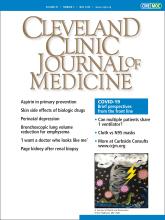
“They fancied themselves free, and no one will ever be free so long as there are pestilences.” —Albert Camus, The Plague
I am rereading Camus’s The Plague, and I am reading it in digital format. There was a significant delay in ordering the actual book. I am apparently not the only person searching for perspectives on our current surreal and, within hospital walls, palpably terrifying situation.
My age puts me in a vulnerable demographic group, and I have not been redeployed to the front lines of COVID-19 care. I am seeing patients mostly from my office via video virtual and phone visits. I find it unsatisfying, clearly a compromise for many encounters, but appropriate for the moment. We are still providing medication infusions to patients who have autoimmune and inflammatory diseases, now with more pointed discussions and angst regarding the potential risks of these therapies. My electronic medical record and e-mail inboxes are bursting with questions from patients and friends regarding their treatments, emotional and physical concerns, and what to do when they have been exposed to someone with COVID-19 or are having some combination of anosmia, acute malaise, fever, rigors, or cough.
These are tough times. There are many shared adversities and fears. Social landscape decisions need to be made, and these decisions are made more difficult and contentious by the mixed messages we are getting from some of our national and regional leaders. The medical community seems to be of one mind on this, following and responding to local realities and the population statistics as they accumulate and are analyzed. We recognize the limitations of epidemiologic models as well as the need to plan for the worst. And I think that we in medicine grasp the concept that “flattening the curve” does not equate with disappearance of the virus. The Groundhog Day conversation in my house invariably includes the unanswerable questions of when we will actually be comfortable again to sit in a restaurant or get on a plane to fly somewhere to give a lecture.
What we in medicine can really uniquely relate to are the clinical implications of COVID-19 infection in individual critically ill patients—the true reality of this pandemic. This is a wicked disease. The spectrum of clinical illness is enormous. Many people are infected and remain relatively well, while others progress quickly to profound respiratory failure. And still others have high fevers and debilitating fatigue, with some experiencing a bimodal course with respiratory failure developing more than 5 days into their symptomatic illness. A portion of infected patients exhibit features of “cytokine storm” driven by interleukin 6 (IL-6) and IL-1, a sepsis-like syndrome with rapidly escalating and quite marked elevations in C-reactive protein and ferritin and fever, which has prompted use of anti-IL-6 and anti-IL-1 therapies in clinical trials and in off-trial “routine” care of ill COVID-19 patients admitted to the hospital.
Clinical data are coming fast and furious. Markers of worse outcome are being proposed (eg, lymphopenia, D-dimer elevation, troponin T elevation) and will be validated or refuted as the clinical context of these tests becomes better defined. Recognizing that some (all?) patients have hypercoagulability is an important contribution to understanding the morbidity of COVID-19. The marked clinical heterogeneity is thus far not understood; the individual patient’s genetics governing their immune response, viral receptor polymorphism, comorbidities including smoking, and the presence of cross-reacting anticoronal antibodies are among the candidate explanations.
Medical centers are responding in unique ways, dictated by their own personnel and physical resources. But there is fantastic sharing of information and learned “best practices.” Physicians and healthcare providers are communicating and sharing their learned lessons in every way imaginable, despite working unlimited shifts and having emotionally draining experiences.
With the goals of sharing our experiences with COVID-19 and analyzing rapidly appearing information from various outlets, we at CCJM have initiated a new online section, “COVID-19 Curbside Consults,” a collection of short and, hopefully, point-of-care-useful pieces on the management of patients with COVID-19. These can be found at www.ccjm.org. We are focusing on specific clinical issues, asking seasoned specialists to comment in the context of their experience and expertise. We are also including descriptions of some healthcare system approaches that we have been instituting and modifying, including a description of our systemwide home monitoring program, the success of which I can personally vouch for, having used it for several patients and friends. We plan to update these regularly, and we have more pieces in the editorial queue that we will post soon.
The way that our colleagues, including (and with special shout-out to) our residents and fellows, have stepped up to confront this pandemic is beyond inspirational. And then, our providers on the front lines of patient care have additionally volunteered to write and share their experiences and analyses of the literature in between their emotionally and physically draining shifts in the hospital COVID-19 units with the hope of helping others provide care to the infected.
The day before I wrote this, a team of our physicians and nurses left after their inpatient rotations in our hospitals to fly to New York City to care for patients and provide some much-needed relief to healthcare providers there, clearly putting themselves in additional harm’s way. Among them is at least 1 graduate and former chief resident from our internal medicine residency program. Having spent about 35 years involved with medical education, I don’t recall ever feeling prouder of our trainees and my colleagues.
As Camus said, “What’s true of all the evils in the world is true of the plague as well. It helps men to rise above themselves.”
- Copyright © 2020 The Cleveland Clinic Foundation. All Rights Reserved.






